The uniqueness of luxury brands largely lies in their cultural attributes.
As luxury brands in the Chinese market enter a more refined stage and Chinese consumers awaken to cultural confidence, the role of overseas luxury brands in cultural activities is also changing. They are moving from one-way output to two-way cultural exchange.
At the sixth China International Import Expo (CIIE), the Luxeplace.com team deeply explored various brand booths and interacted with many heads of these brands. They strongly felt that many luxury brands and groups have raised the banner of “cultural exchange.” The CIIE booths of luxury brands have evolved from platforms for product display to platforms for cultural exchange.
For example, the LVMH Group pavilion emphasized their “Know-How and a Cultural Heritage,” had Ludovic Watine Arnault, a representative of the LVMH Group and member of the Arnault family, express at the opening ceremony: “Our commitment to the CIIE flows naturally from our heritage. It’s an opportunity for us to celebrate our shared history with China, while exploring new opportunities for growth and engagement. We are convinced of the growth potential of the Chinese market and in the spirit of even greater sharing and exchange we look forward to further strengthening our relationship with our valued local partners and clients.”
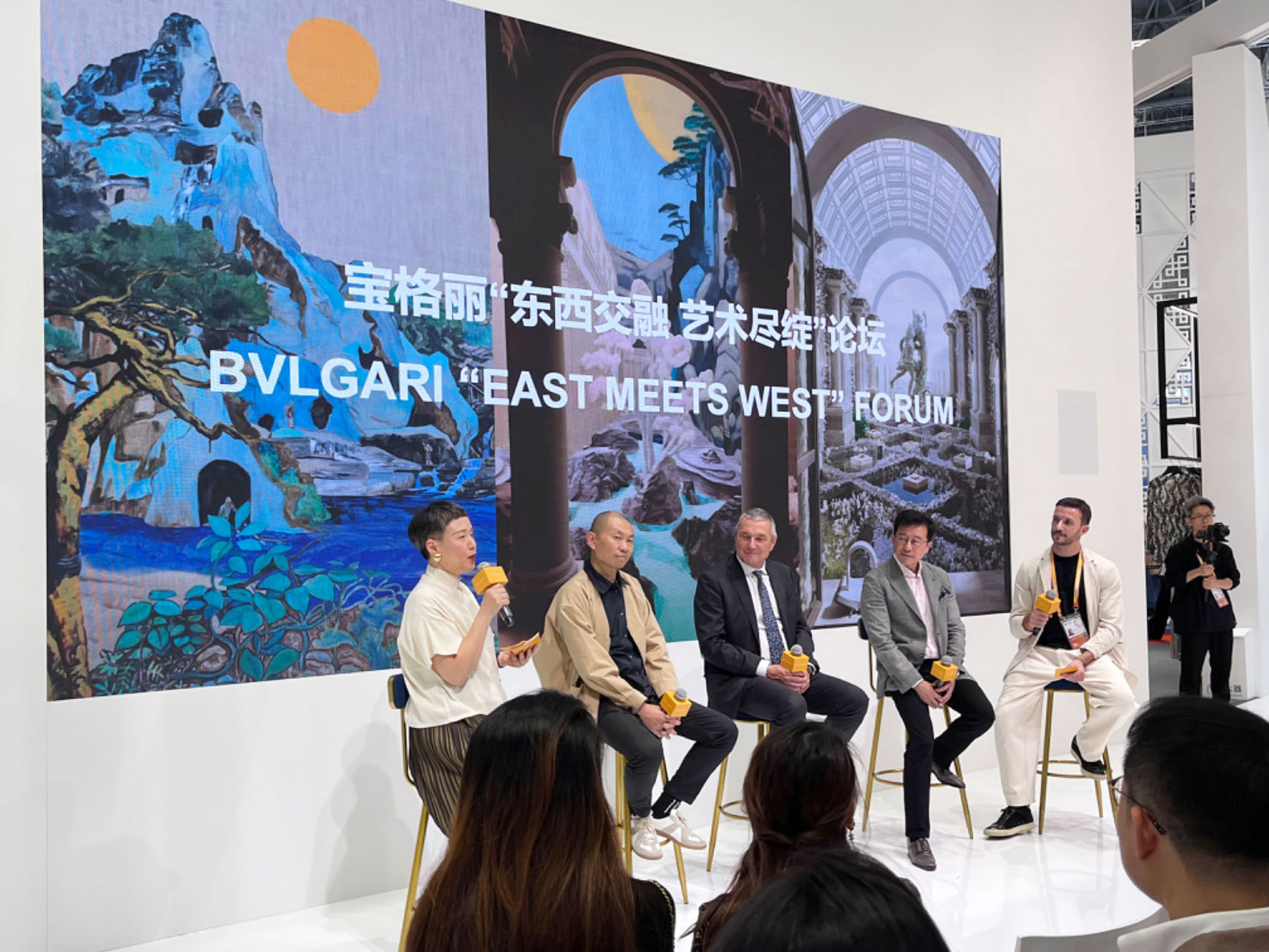
At the Bvlgari forum “East Meets West,” Andrew Wu, President of LVMH Group Greater China, explained the relationship between luxury brands and culture: “Commerce and art are intermingled; culture is a part of luxury brands. In the interaction with Chinese consumers, luxury brands are also engaging in a kind of cultural exchange.”
At this CIIE, various luxury brands have adopted different methods for “cultural exchange.” What are the highlights?
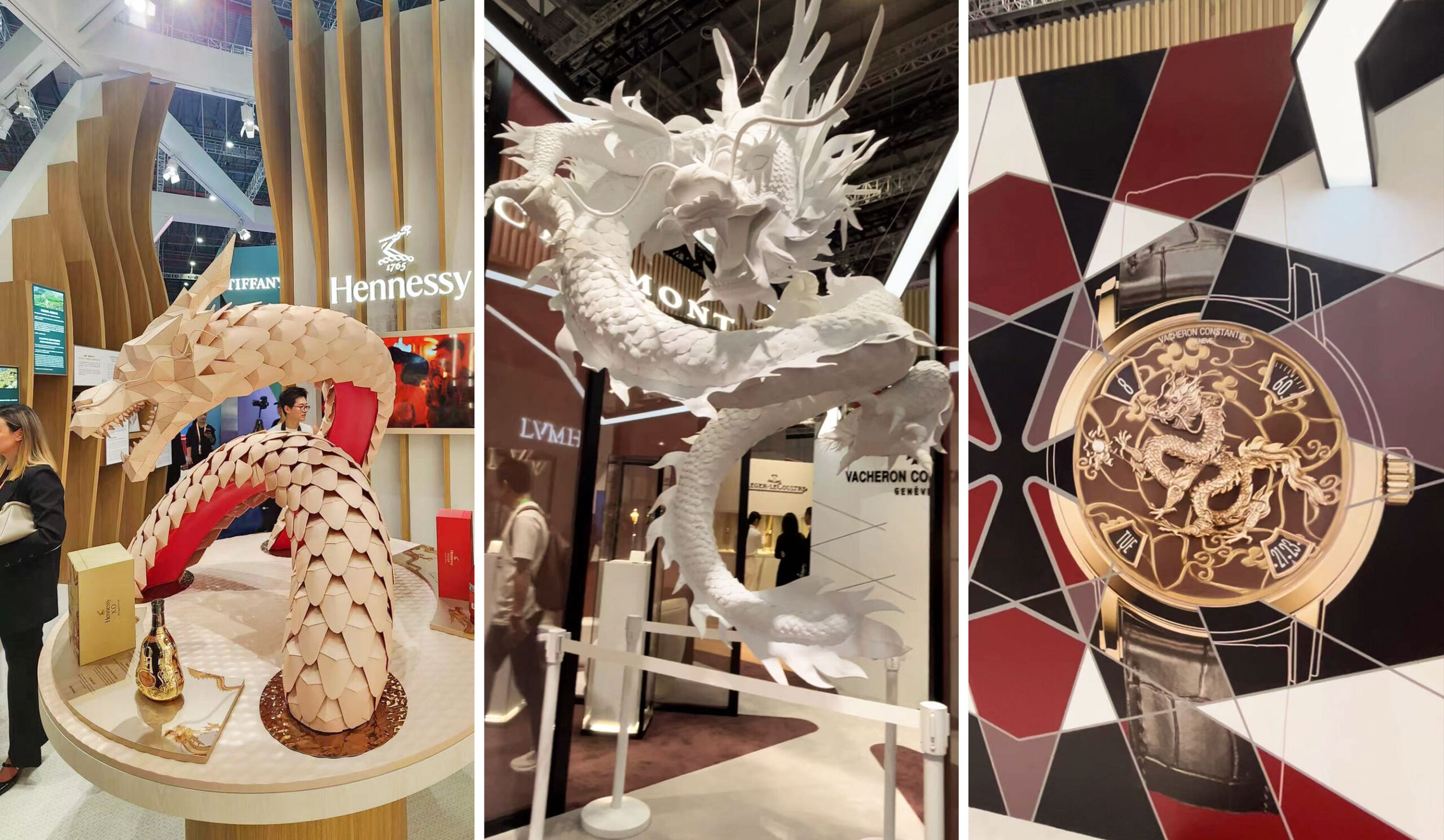
Top left image: LVMH Group HENNESSY booth, themed around the latest Dragon Year limited edition series. Top second and third images on the left: Richemont Group Vacheron Constantin booth, themed around the Art Master Series Chinese Zodiac Legend of the Dragon Year watches.
Creating a Story Projection Hall to Tell the “Chinese Love”
At the Richemont Group booth, Cartier set up a projection hall in the central area, where they played the “L’Odyssée De Cartier” “Chinese Love.”

The film discusses how, since the 1920s, the brand has been influenced by China’s long-standing cultural and artistic heritage. It includes the Chinese books, ceramics, and objects collected by the grandson of the founder, Louis Cartier, the works inspired by Chinese patterns created by successive creative directors, and the art collaboration projects of the Cartier Contemporary Art Foundation with the Shanghai Museum of Contemporary Art and the Forbidden City.
The film narrates, “China has always fascinated Cartier, and Chinese art has continually attracted Cartier.”
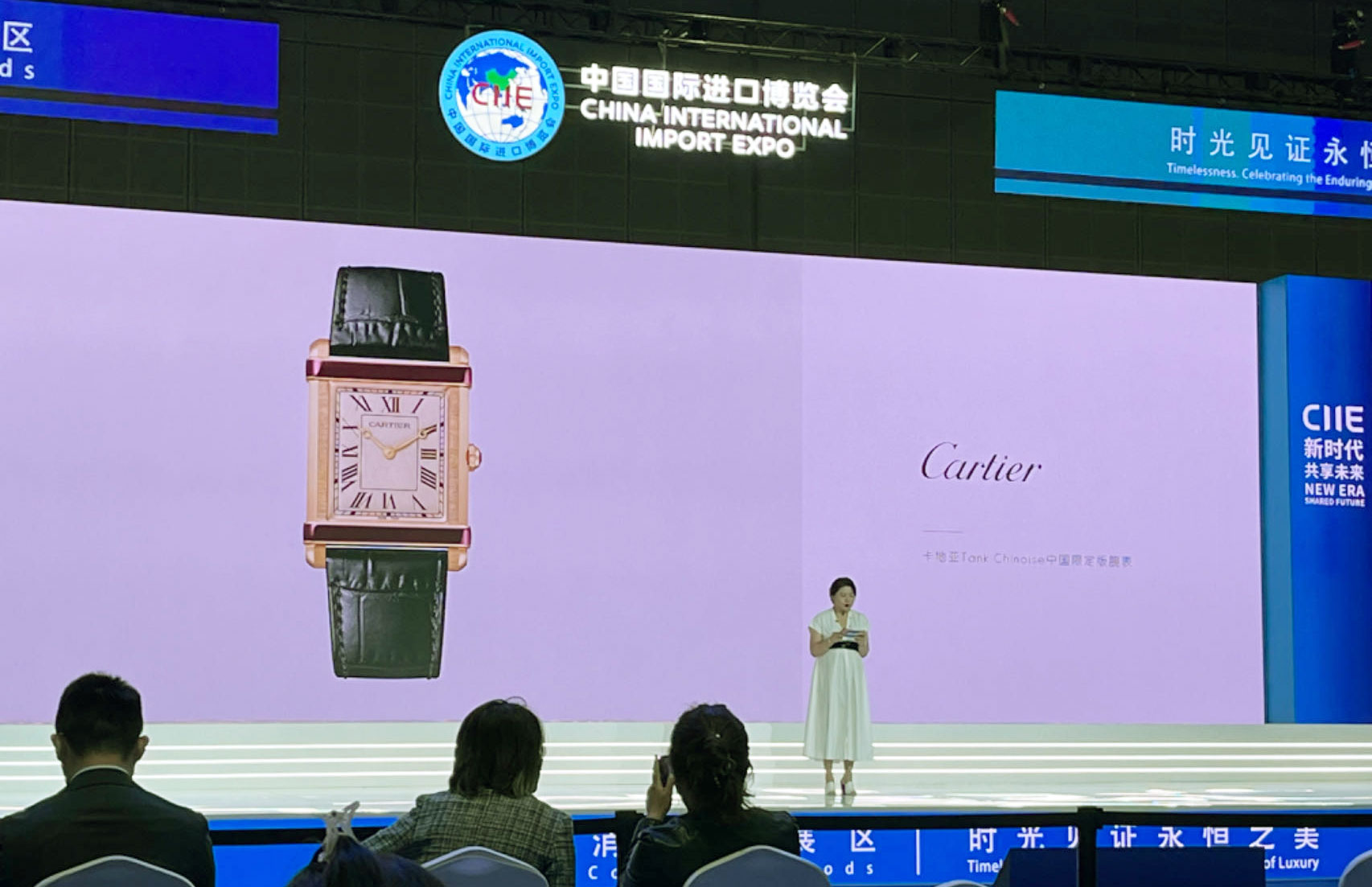
In terms of exhibits, the Richemont Group launched the Cartier Tank Chinoise China Limited Edition watch at the CIIE new product launch platform.
The first Cartier Tank Chinoise watch was created in 1922 and has a century-long history. The new model draws inspiration from the architectural style of Chinese temples and the geometric shapes of temple porches, featuring a burgundy lacquer, highlighting the horizontal axis above the vertical lugs.

Cartier also selected an antique Chinese-patterned cigarette case from its vintage collection for display at the event.

Cécile Naour, CEO of Cartier China, commented, “Cartier has a long-standing deep connection with China, and our dialogue with China continues to this day without interruption. This is the fourth year that Cartier has participated in the CIIE, and we are very happy to take this opportunity. , presents the essence of Cartier’s style to the Chinese audience, and tells the endless sources of inspiration and cultural exchanges between the brand and China. In the future, Cartier will continue to cherish and enrich the dialogue with the Chinese audience, allowing the brand to continue to write wonderful stories on this vast land story.”
Dior also produced a detailed film about the brand’s origins with China.
The film starts with the brand’s founder using Shandong silk for Dior suits in 1947, extending to the outfits designed for the Duke of Windsor with traditional Chinese landscape painting patterns, the 1998 autumn and winter ready-to-wear collection inspired by cheongsams, and recent shows, exhibitions, and artist collaborations in China.
Moreover, Dior paid tribute to its collaboration with the 25th Shanghai International Film Festival through a special film.
Kering Group, at the opening ceremony of its pavilion, recounted the story of the group’s founder, Mr. Pinault, donating the bronze heads of a rat and a rabbit from the Yuanmingyuan in 2013.
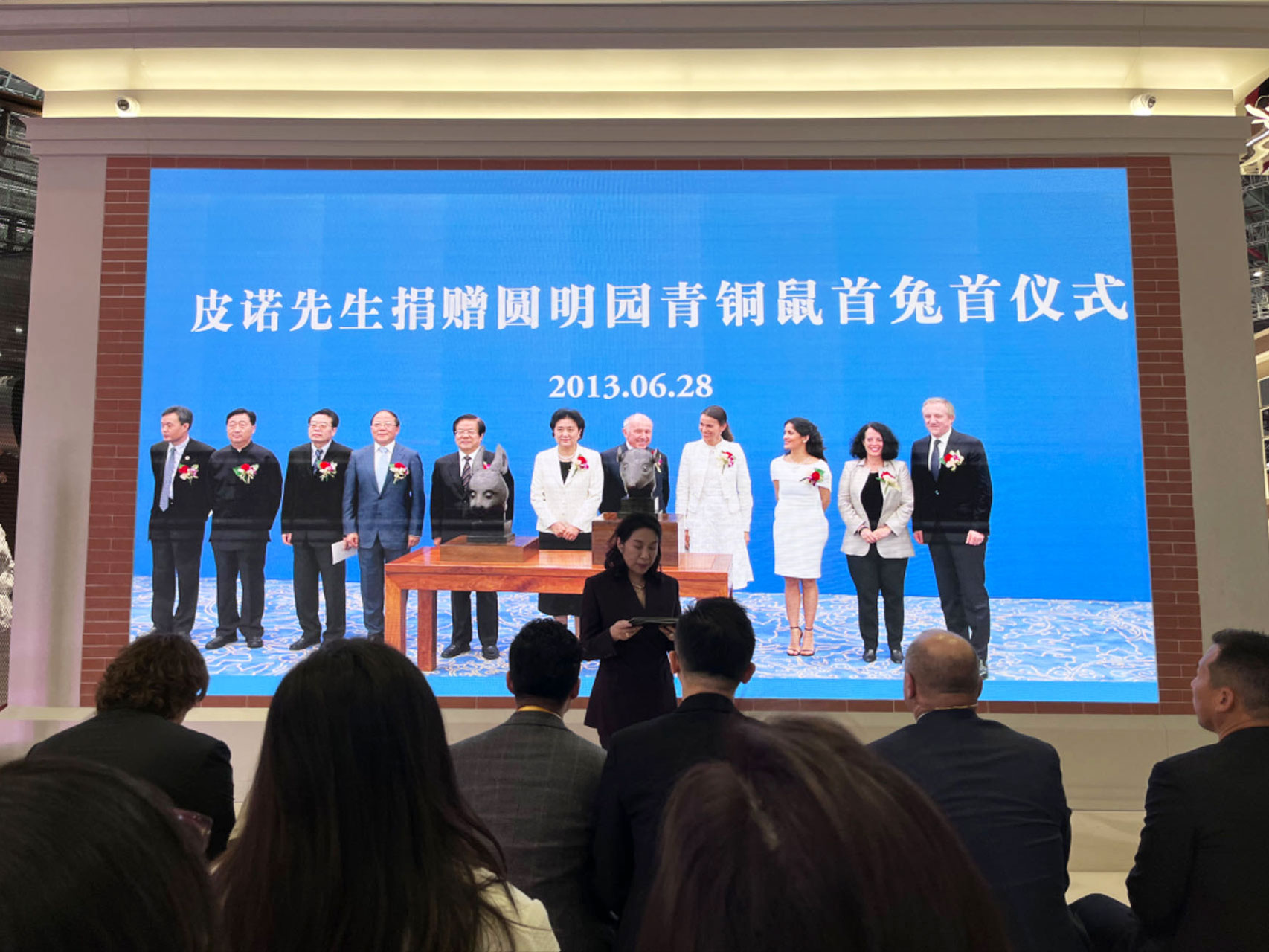
The overall design of the Kering pavilion pays homage to the location of its headquarters at 40 Rue de Sèvres in Paris, the former Laennec Hospital. Built in the 17th and 18th centuries, the arches and tall windows of Laennec Hospital represent the typical architectural style of France during that period.
The pavilion also set up a viewing area, detailing the group’s recent projects in China, such as “Women In Motion” and the Kering Generation Award for Sustainable Innovation Pioneers.
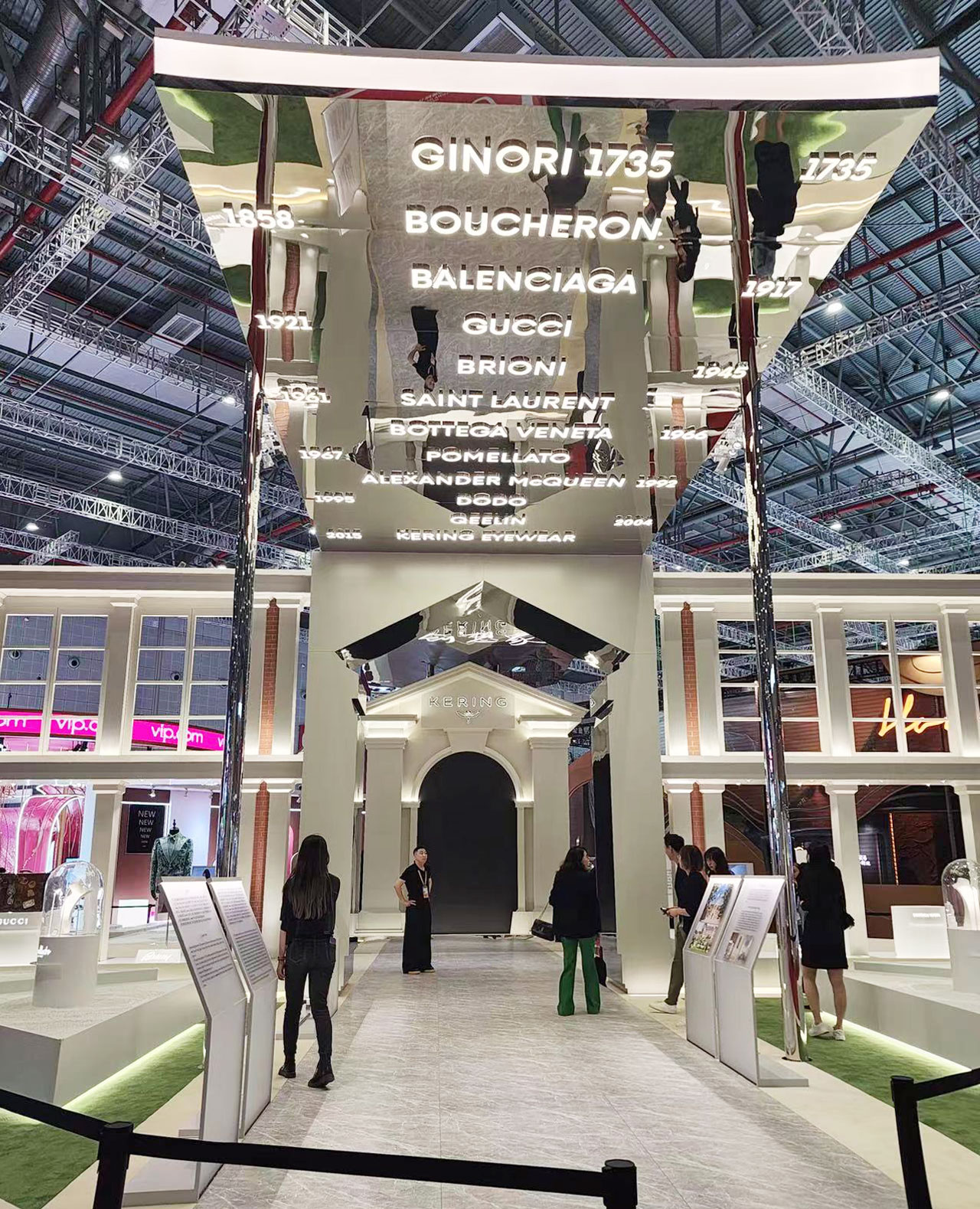
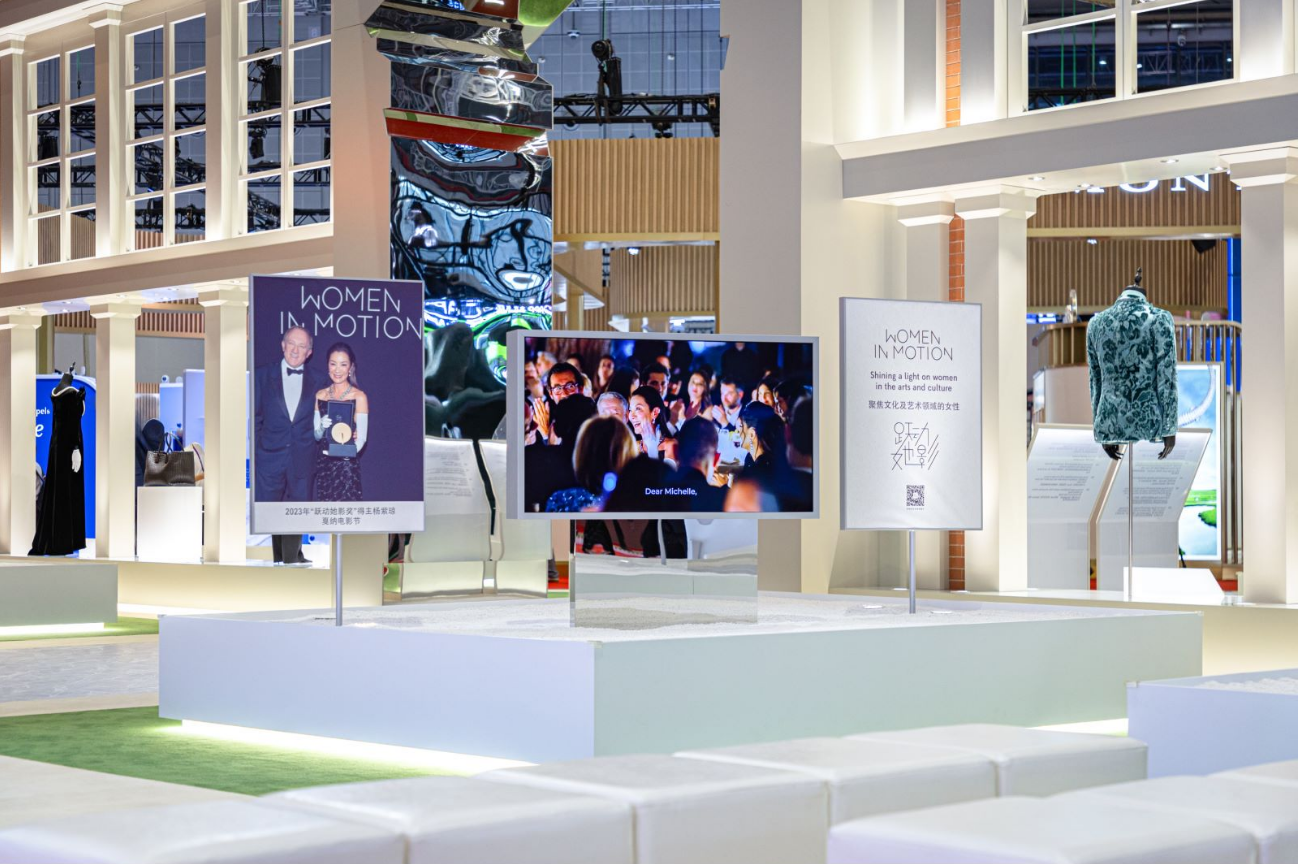
Velvet Flowers, Yi Embroidery, Monochrome Glaze: Intangible Cultural Heritage as a Powerful Source of Inspiration
Several brands showcased works with distinct Chinese characteristics, where the use of intangible cultural heritage (ICH) techniques became a major highlight.
Dior’s 2024 Summer Men’s Collection features knit hats adorned with velvet flowers. Velvet flower making, a provincial-level intangible cultural heritage of Jiangsu Province, was traditionally used in folk festivals and ceremonial decorations, with a craft history dating back to the Tang Dynasty (618-907 AD).

Dior also displayed two signature outfits designed by current Women’s Creative Director Maria Grazia Chiuri, using fabrics from the national-level ICH of traditional costumes of the DaLi Dong ethnic group in Guizhou.
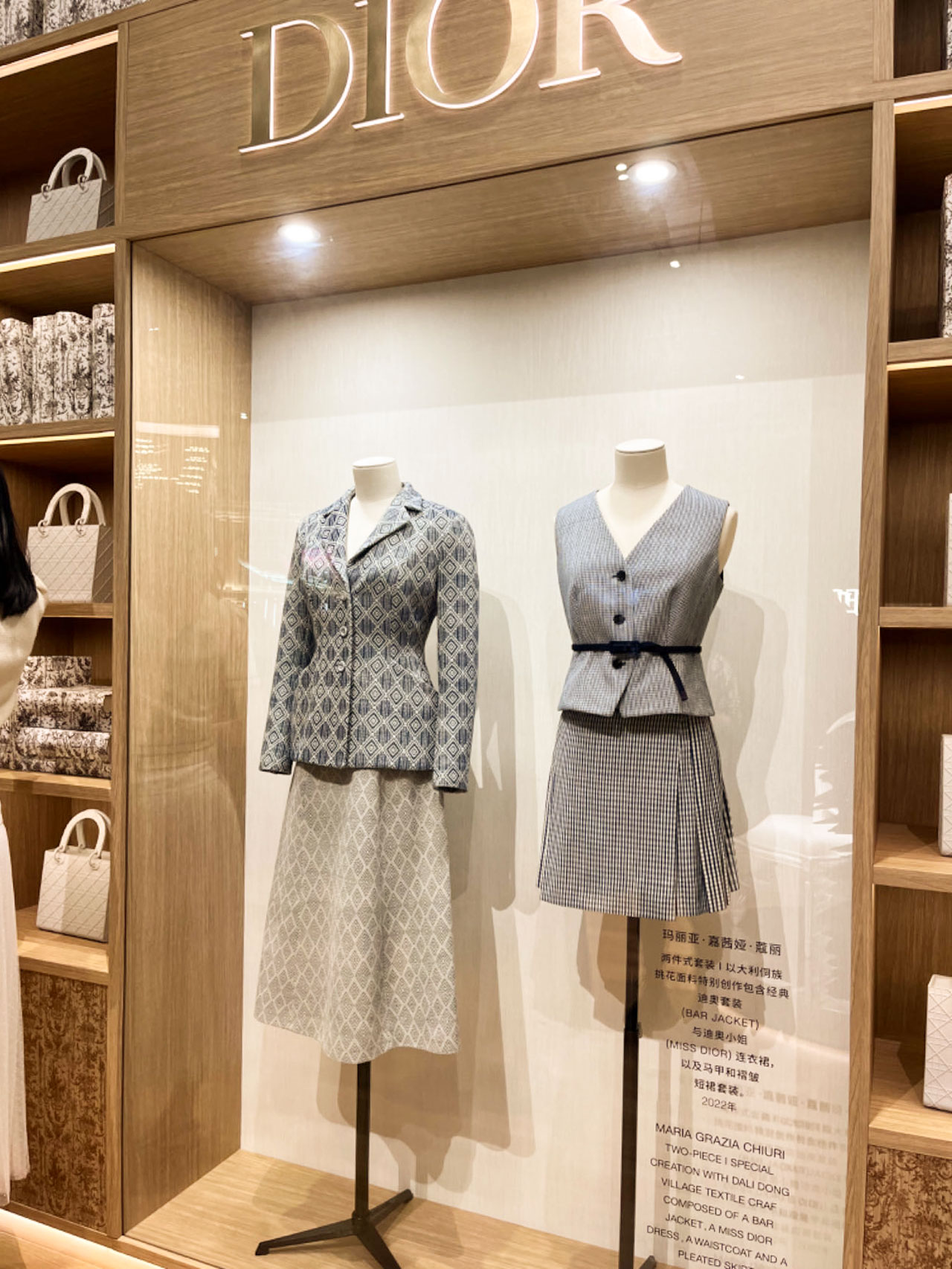
FENDI presented a Baguette handbag specially created for this year’s Beijing “hand in hand” artisan art exhibition. The bag was co-crafted with two inheritors of Yi ethnic embroidery and silverwork, an intangible cultural heritage, and is embellished with traditional Yi silver ornaments like dangling tube tassels and silver bells.
FENDI’s entire booth was designed around the “hand in hand” project, a handcraft partnership project with local cultural artists launched by the brand in 2020.

LOEWE, joining the LVMH Group booth for the first time, showcased its acclaimed 2023 Early Spring China Monochrome Glaze series handbags, and a monochrome glazed ceramic Golden Bell Bowl crafted by national-level ICH representative Deng Xiping.

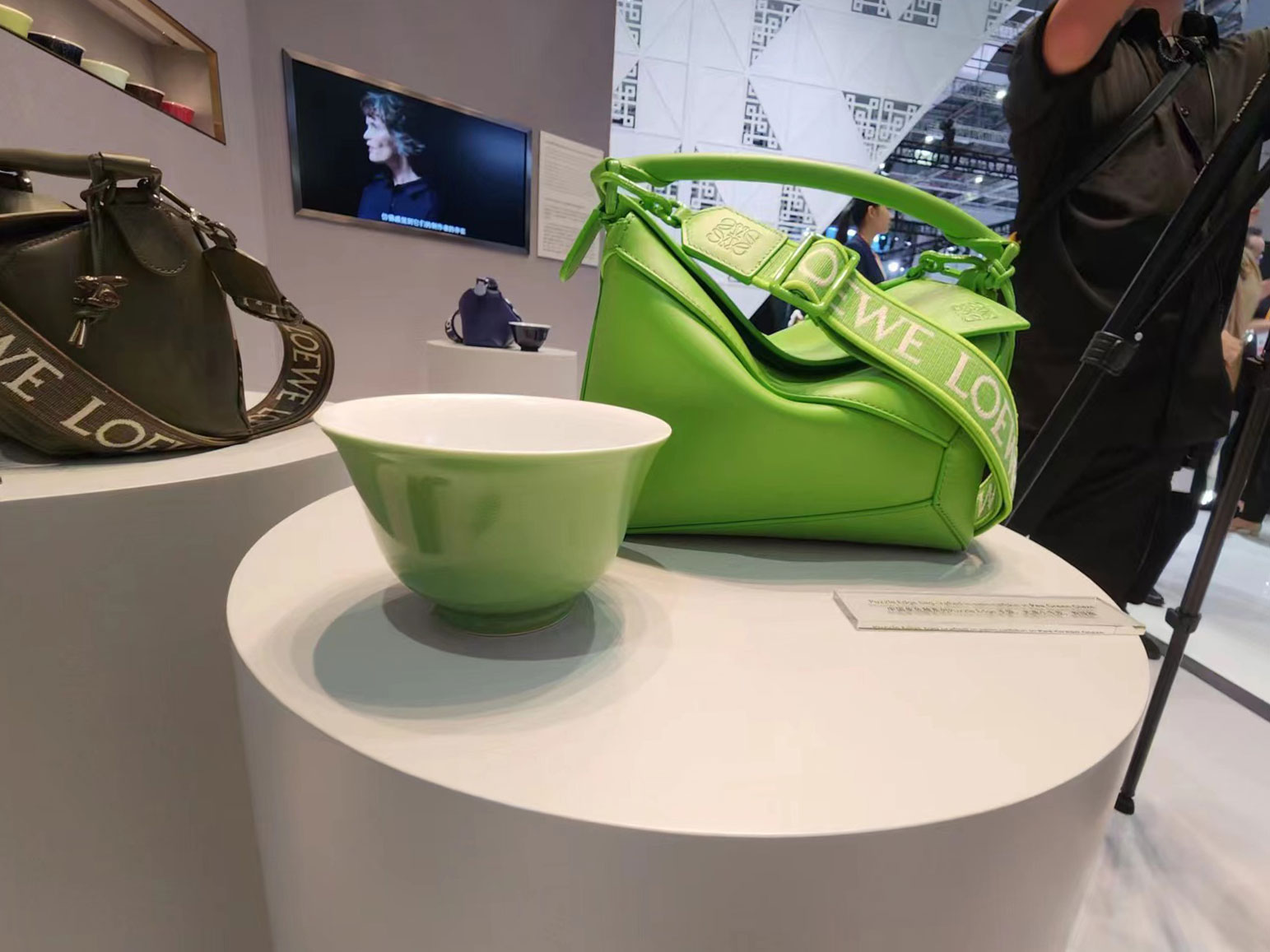
At the Kering Group booth, Qeelin introduced the Wulu Fairy high jewelry series, inspired by the Dunhuang Flying Apsaras murals. To mimic the fluid movement of the fairy’s dance sleeves and ribbons, the necklace is made of a base with 525 diamonds of 27 different diameters.

Collaborating with Chinese Artists to Foster Creative Fusion
Bulgari, with the theme “EAST MEETS WEST,” invited Chinese contemporary ink animation artist Qiu Anxiong and Italian visual artist Giuseppe Lo Schiavo to exhibit together.
Bulgari merged the distinctly Eastern and Western cultural artworks of the two artists into an AI art installation that interacts with the audience. The AI art installation captures real-time brainwave and heartbeat data of viewers as they appreciate the artwork, creating unique digital art pieces.
Bulgari states that this artistic collaboration aims to “interpret the thriving scene of harmonious integration of artistic creation and cultural development between China and Italy.”
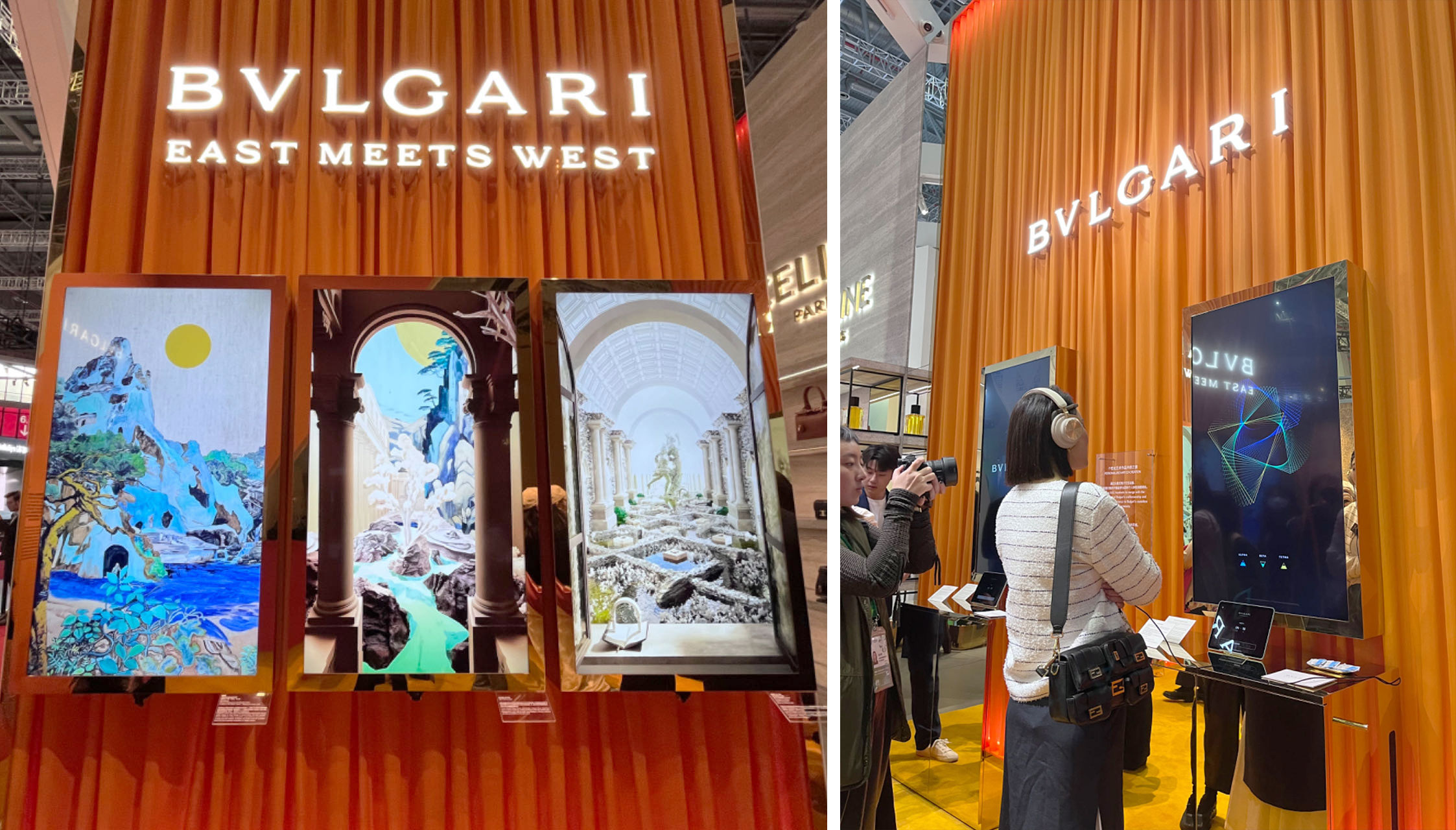
At the LVMH booth, Bulgari CEO Jean-Christophe Babin, LVMH Group President of Greater China Andrew Wu, and the two artists initiated a thematic forum, deeply exploring the close connection between the brand, culture, and art.
Wu commented in the forum, “The relationship between commerce and art is fascinating. Once commerce satisfies basic needs, there arises a demand for the spiritual. Art is part of commerce, and the two are intertwined. Any high-end, humanistic brand incorporates culture. For example, Bulgari is an excellent representative, bringing centuries of accumulated culture, Italian culture, Roman culture. In its interaction with the Chinese market and consumers, the brand also engages in cultural exchange.
We often hear about infusing culture into brands, but in fact, culture is inherent to brands. Successful brands carry culture; they don’t just add culture for the sake of labeling. This is something worth pondering. Therefore, the East-West artist collaboration we present at CIIE is not a sudden idea but an extension of what the brand has always been doing.”

Second to fourth from the left in the top image are Chinese artist Qiu Anxiong, Bulgari CEO Jean-Christophe Babin, LVMH Group President of Greater China Andrew Wu, and Italian artist Giuseppe Lo Schiavo.
Dior brought several collaborative works with Chinese artists, including reinterpreted classic LADY DIOR handbags and oval back chairs.
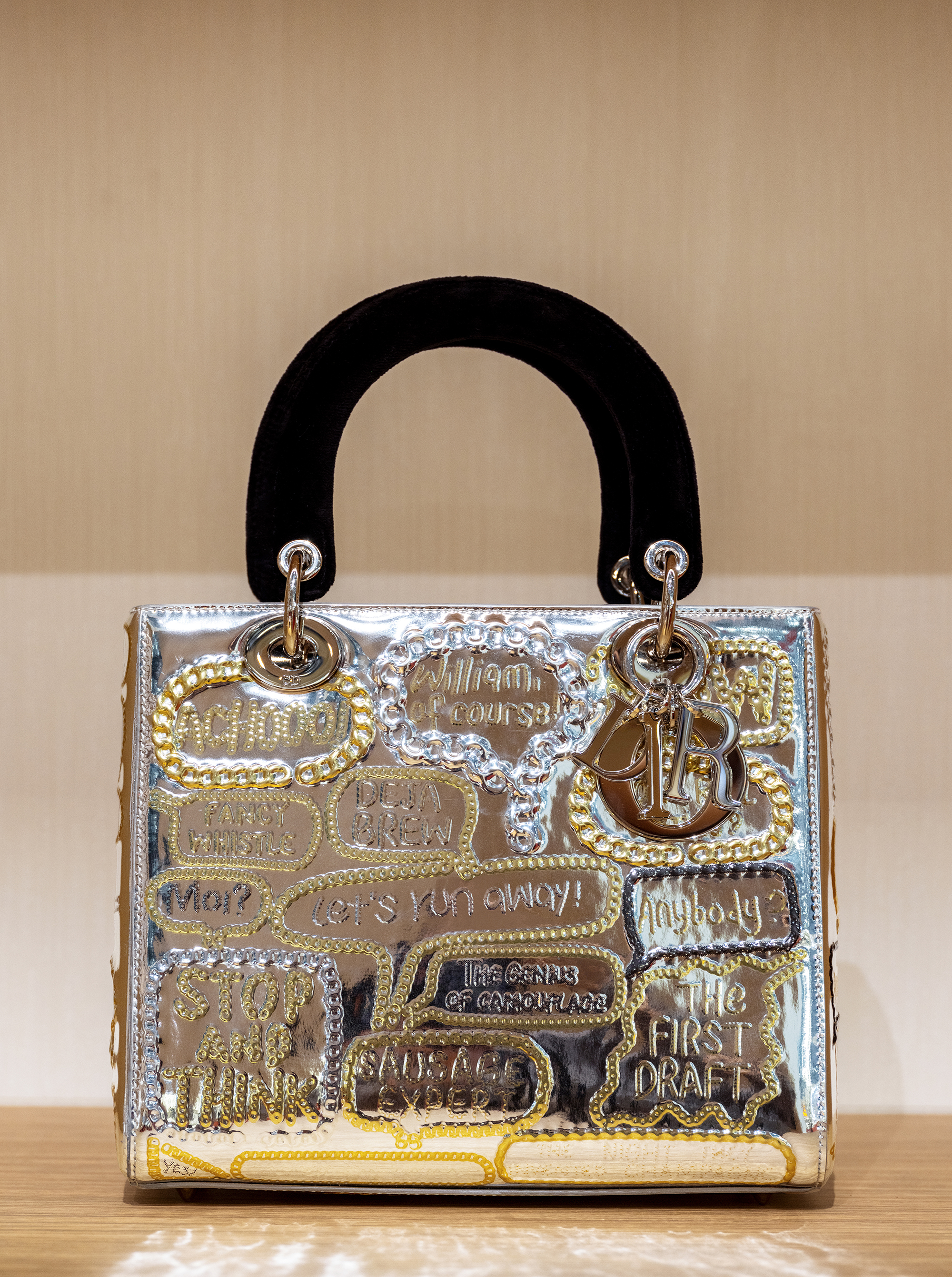
A new handbag interpreted by Chinese artist Xu Zhen for the “DIOR LADY ART#8” artist limited series, making its debut in China at this CIIE.
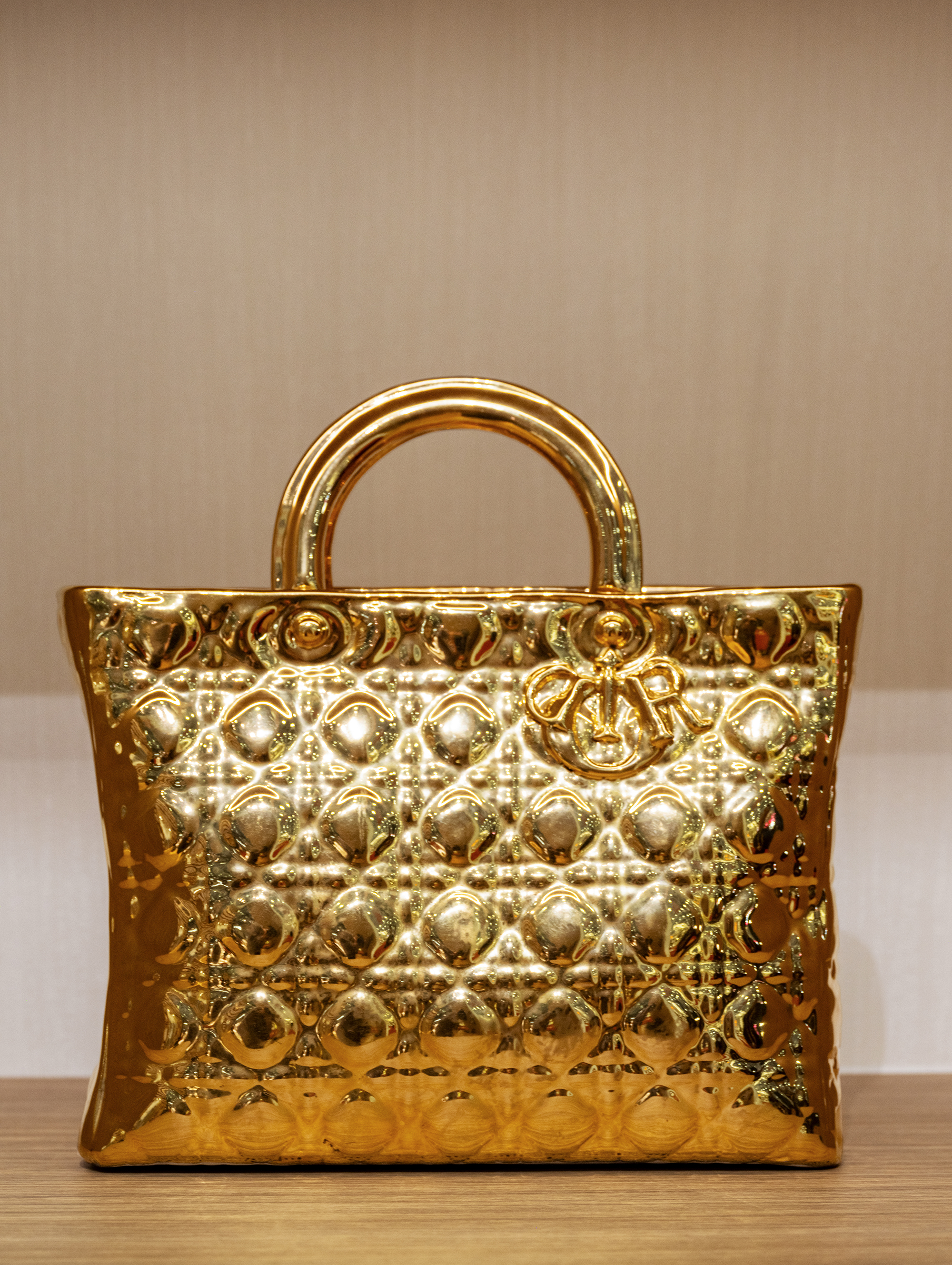
An installation by Chinese artist Liu Jianhua for the “LADY DIOR As Seen By” art project.

LE CABINET EXTRAORDINAIRE (Dior Prestige Artist Limited Edition Gift Box) co-designed by Dior and Shanghai-based NERI&HU.
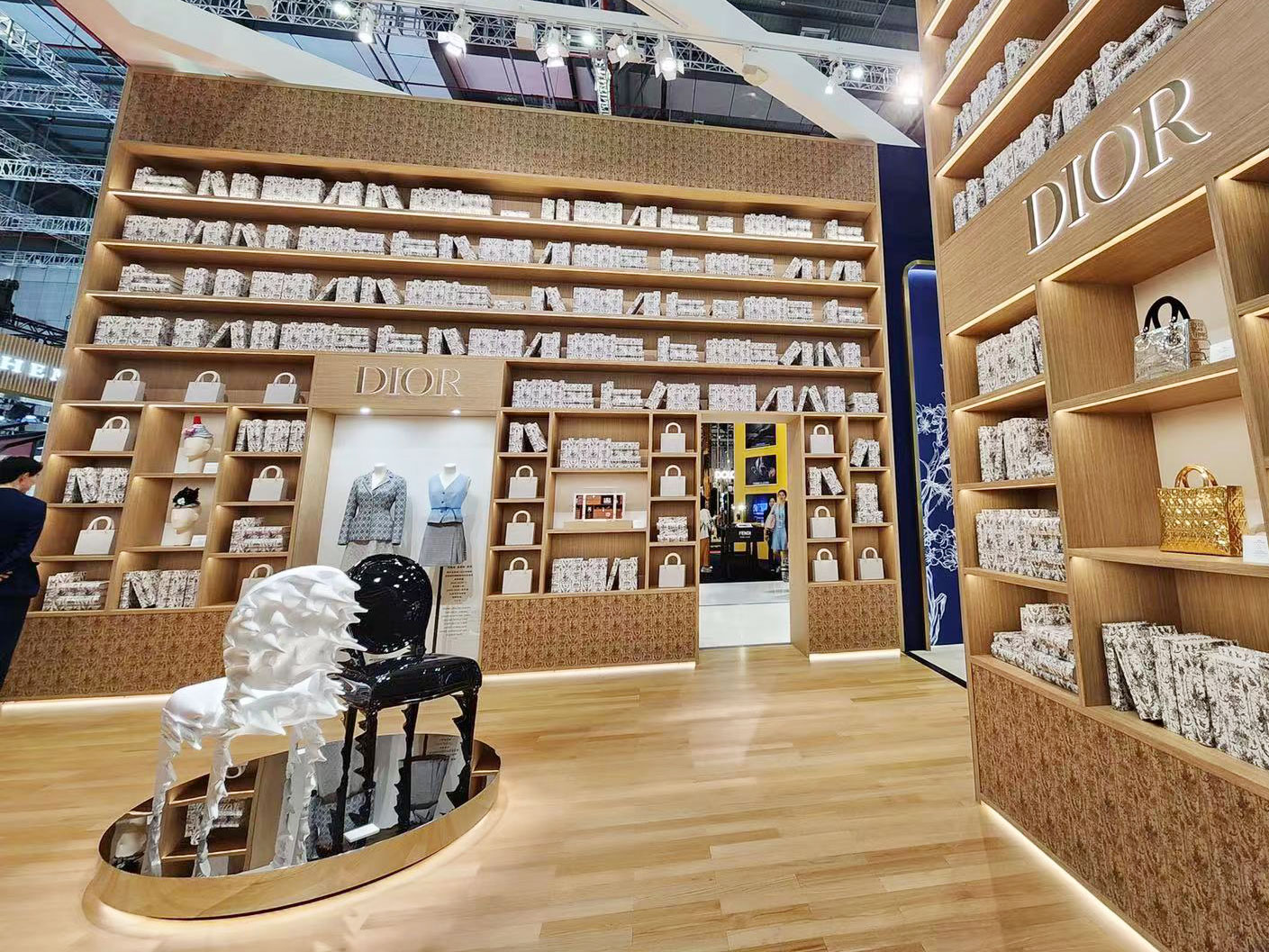
“Meteor,” an oval back chair work designed by Chinese architect Ma Yansong for the 2021 Milan International Furniture Fair (SALONE DEL MOBILE).
In anticipation of the 2024 Lunar Year of the Dragon, HENNESSY presented a Dragon Year limited edition work co-created with Chinese artist Yang Yongliang. The booth also showcased a series co-created with renowned Chinese artists Zhang Guangyu, Zhang Huan, Liu Wei, Zhang Enli, and Yan Pei-Ming.
Additionally, HENNESSY President and CEO Laurent Boillot attended the forum, discussing HENNESSY’s extensive and profound cultural connection with China, including the brand’s support for local cultural arts and environmental protection efforts.
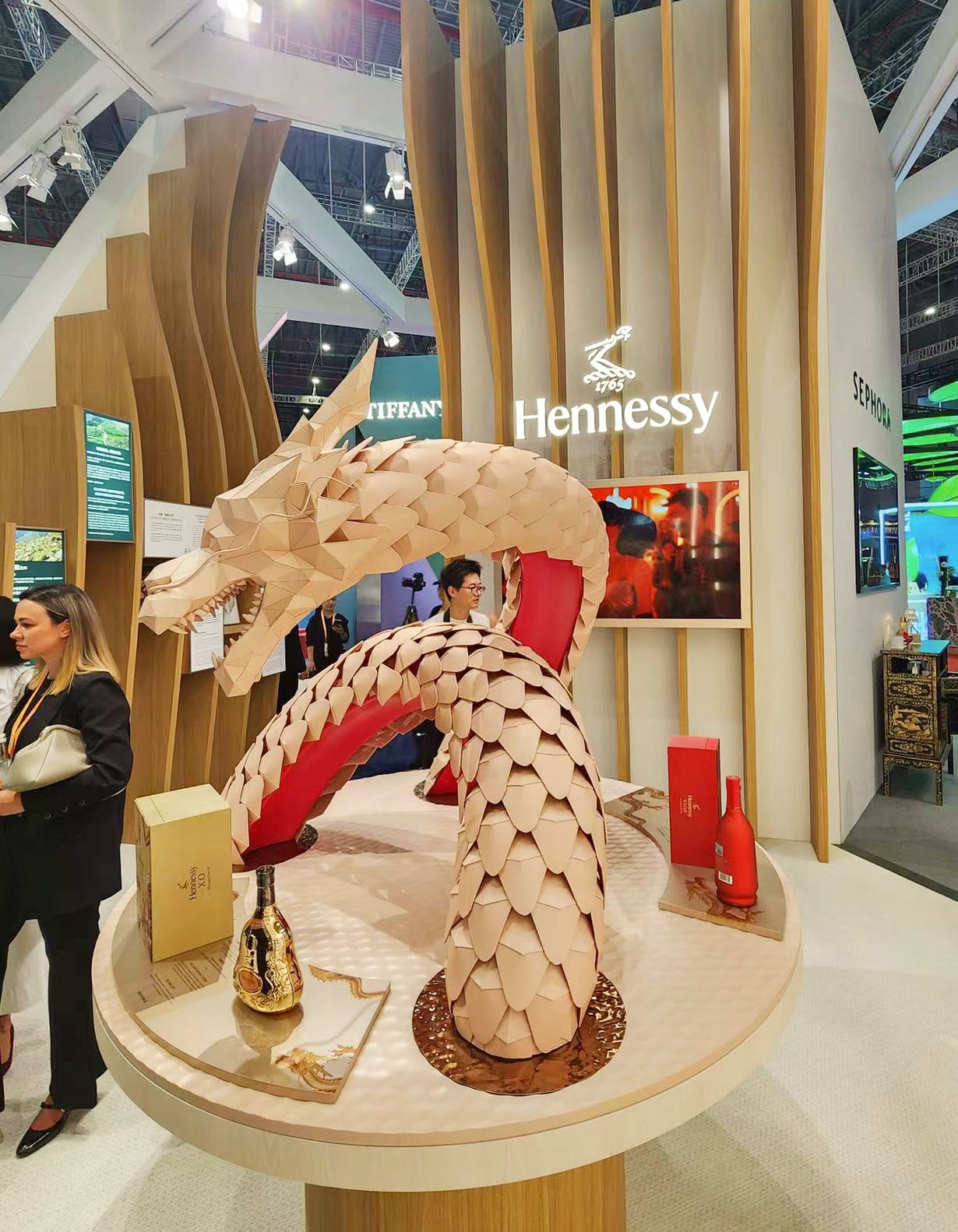
In the LVMH Group pavilion, the Sino-French luxury skincare brand CHA LING brought four digital art pieces in collaboration with Chinese artist Wang Yang, inspired by Song Dynasty peonies in bird-and-flower paintings. Artist Wang Yang also visited the booth.

| Image Credit: On-Site photography by Luxeplace, press releases
| Editor: Mireya



